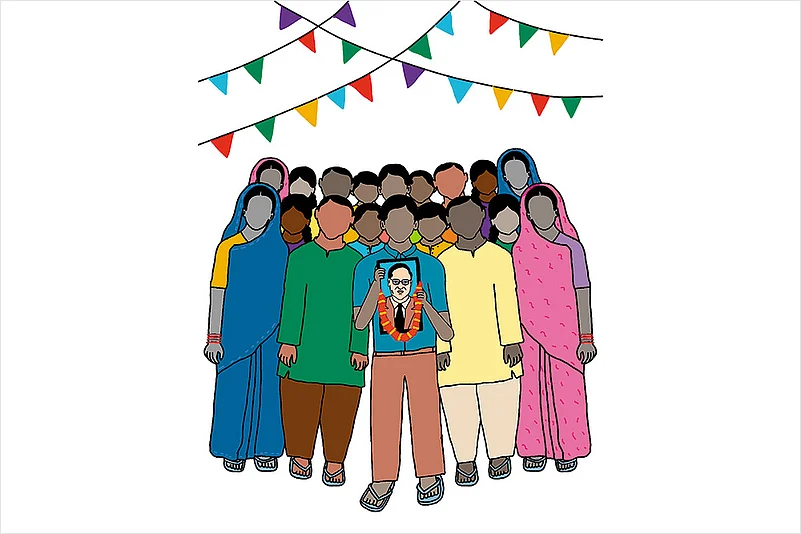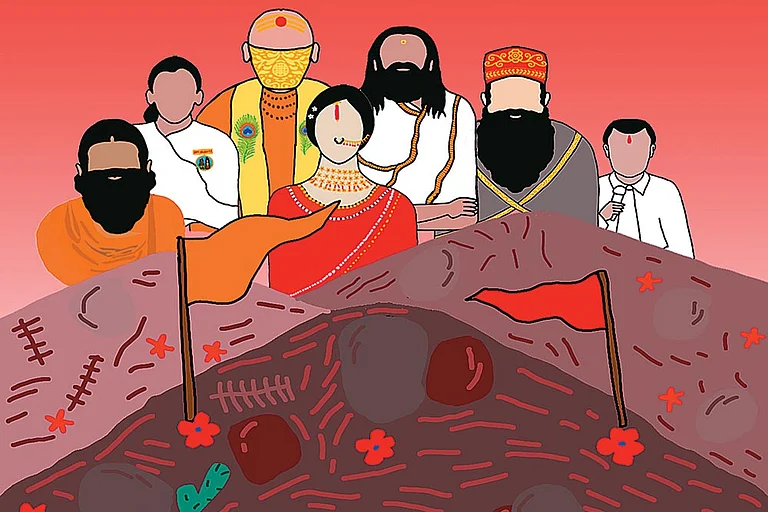Hathras incident has brought one more baba into the national limelight. In a country of more than a billion people, there are babas, big and small, and perhaps in millions. The tragedy notwithstanding—and the clear lapses in organising the event—what is baffling is the continued popularity of some of these babas across the country despite all their misadventures. Gone are the days of babas who were hermits, renunciants and ascetics. It’s not as if this breed is completely extinct, but they are very few and far between. A large number of today’s babas have mushroomed as entrepreneurs, as insecurity management start-ups, catering to varied kinds of clientele. Some, like the 5-star ones, handhold the rich and the privileged facing difficult times in exotic and highly esoteric settings. In the meantime, a vast majority of the ordinary, underclass, both urban and rural people, grappling with all kinds of anxieties and insecurities veer around the rest.
Indeed, the proliferation of these babas and deras is indicative of the collapse of the traditional social security net and solidarities, even the aspirational ones. However, one factor that often gets sidelined in these discussions is the ubiquitous caste system in India and its mainstreaming with world religions. The religious congregation in Hathras owed their allegiance to the cult of Narayan Sakar Hari (Bhole Baba) who belongs to the Dalit Jatav community, and so are most of his followers. In Punjab and Haryana, deras are popular among the subaltern castes. A large number of deras that exist have a direct connection with the disillusionment of the subaltern castes and the discriminatory religious practices embedded into the system of mainstream religious traditions. In Punjab, despite Sikhism’s unequivocal anti-caste position, a caste-like formation has emerged over the centuries, leading to the rise of a dominant caste of Jatt Sikhs which monopolised both the sacred and the temporal spaces. The people from the lower castes faced discrimination not just in gurdwaras, but also in funeral places. So in village after village, Dalit gurdwaras emerged.
Caste surreptitiously entered even those spaces that espoused equalitarian world views. After having waited for the promised equal space for centuries, the subaltern castes gradually started experiencing a sense of desperation. This is at the centre of the rise of an alternative imagination of religiosity around varied axes. People started congregating around their ‘own’ heroes, sants and local traditions they felt at home with. And if nothing worked, people placed the portrait of B R Ambedkar on a pedestal, took pheras and solemnised their marriages, to protest the discriminatory caste practices, as reported from many places in Punjab and elsewhere. In Punjab, posters and calendars of Ambedkar are omnipresent in many of the deras.
Deras and parallel traditions emerged around Ravidas, Kabir, Valmiki, Balaknath and others as a counter to the pervasive caste discrimination. People felt a new sense of autonomy and freedom under a new identity umbrella. Many of these parallel movements are anchored by their own caste members. But not always. Sometimes this desperation to chart out a new territory among the subaltern castes is used by others to consolidate their own fiefdoms, as in the case of Sirsa-based Dera Sacha Sauda. This dera is headed by Gurmeet Ram Rahim Singh, a Jatt Sikh, whose enterprise has nothing to do with the political project of Dalit identity, even though his dera has a substantial presence of the erstwhile lower caste communities.
Of course, these religious assemblies become very significant in the broad chessboard of regional caste politics. It is here that these deras and babas become crucial. Gurmeet Ram Rahim Singh is in jail for crimes like rape and murder, yet his influence remains undiminished. He has been getting generous paroles and has been conducting religious satsangs from his Baghpat-based dera during these furloughs. And life goes on as usual in the Sirsa dera, where his followers believe that he will be free soon. He is seen as a crusader who waged a war against drugs and alcoholism, and that’s why he is being framed by unscrupulous elements. On many occasions, the timing of his parole—close to elections in Haryana and Punjab—has raised eyebrows and invited criticism.
Even in the case of the Hathras tragedy, agencies have so far kept Bhole Baba outside of any inquiry as his name does not figure in the FIR. Many think that Bhole Baba’s identity, belonging to the Jatav community—which is an influential and numerically significant Dalit caste in Uttar Pradesh—has saved him. Bhole Baba, it is believed, wields tremendous clout among his followers in the region and this is the political capital no political party will dare to be irreverent to, let alone mess up with.
To understand the religious practices, people and phenomena, one needs to be aware of its multiple layers and nuances. For instance, we hardly ever hear of any stampede-like situation from the deras or other places in the north-west region, known for hosting large congregations. This is because these congregations are better organised and there is a great tradition of sevadars (volunteers) in the region that discipline crowd behaviour more easily and efficiently. Moreover, the nirguni (without form) religious overtones of the region do not seem to invest too much in human forms and its materiality. This is unlike in Hathras, for example, where people ran after the baba to touch his footprints, leading to the tragic stampede.
If religion is about emancipatory philosophy and dialogue, for internal quest and reflection, it augurs well for society and civilisation. But the history of religion tells us it is also about power play and politics; of dominance and hegemony. Religion has strong psychological explanations too. In times of crisis and upheavals, the religious space provides mental and spiritual anchoring. However, it is the sociology and history of religion that allow us to dwell deeper into the mysterious realm of divinity. In the South Asian context, we must not sidestep the caste factor to get a close inside view of religious phenomena and its myriad hues.
(Views expressed are personal)
(This appeared in the print as 'Don't Sidestep Caste')
Santosh K Singh is a Sociologist at the DR B R Ambedkar University Delhi. His monograph on deras is slated to be published by penguin random house


















